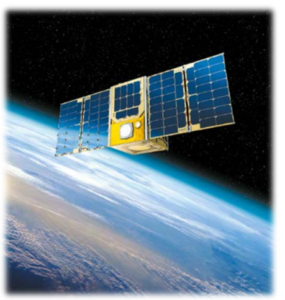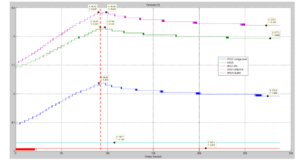Parts Quality Assurance on Nanosat
- Posted by Arnaud Dufour
- On December 3, 2019
- 0
 ANGELS project
ANGELS project
- In-orbit demonstrator
- Lifetime : 2 years
- Fast development : 33 months
- Satellite dimensions : 22x22x35 cm
- Payload : Miniaturized ARGOS Instrument
- Payload mass : 2.5kg
Payload developped by Syrlinks 12U platform from Nexeya (now Hemeria)
The ANGELS PA specification
CNES has proposed a tailored specification with the following targets:
- Adapt the specifications on mission needs
- Assumed risk-taking
- Tight development schedule
Focus on reliability data
- The goal is to reduce lot tests at component level
- Procurement acceptance:
- To accept a component without testing, you need to gather datas from manufacturer and verify applicability.
- If it is not enough, we check the quantity on QM and we consider that the test on QM can cover the component qualification.
- If not enough, we perform tests at component level.
- Payload ANGELS’s feedback
- Most of components have datas from manufacturer
- For two references, life test and thermal cycle were done at board level
- No complementary tests performed at component level
Focus on radiation – Destructive effects
- Failures generated by heavy ions forbidden
- We performed a component selection based on our heritage
- We have a database with radiation data on commercial components
- If the component reference matches, we check similarity and we use it
- If no data, we propose other reference that fit the need
- If nothing available, we perform a test
- Payload ANGELS’s feedback
- We save several radiation tests by proposing a reference with heritage
- It is easier to propose a component change at the beginning of development (EEE Quality experts need to be in the design process as soon as possible, it avoids massive redesign!)
Discussions with EEE Quality and designer at the beginnig were very efficient
Focus on radiation – Non destructive effects
- For non-destructive single event
- No availability figure to provide, just do the ‘best effort’
- Mitigation is performed at board level
- A COTS SoC is used, as we have lots of radiation datas
- A rad-tol supervisor is used to handle functionnal interrupts
- Payload ANGELS’s feedback
- We put mitigations in place where it was critical. Possible to inhibit some of them in orbit.
- A big work have been done on SET that could be destructive
- Where mitigation was too complex to implement, we perform a reboot instead
- Payload is able to reboot in 30 seconds
Feedback from board level testing
- For TID, it can highlight very quickly the weakest component on the board
- Through monitoring, it appears that regulators have a constant degradation.

- For the life test, nothing seen on component.
Lessons learned
- Big difficulties to get automotive component in time
- Supply time proposed oftenly more than 30 weeks!
- Be aware that chocs & vibrations in automotive standards are a bit lower.
- Trust becomes a key word in these types of development
- The goal is to avoid a heavy test campaign on the part lot.
- Thus, you need to gather datas from manufacturer and to estimate the confidence level that you can put on them
- You need to put in place some rules to accept radiation by similarity between lots
- Product Change Notice is a synonym of obsolescence, for radiation datas
Latest posts by Arnaud Dufour (see all)
- Parts Quality Assurance on Nanosat - December 3, 2019


0 comments on Parts Quality Assurance on Nanosat